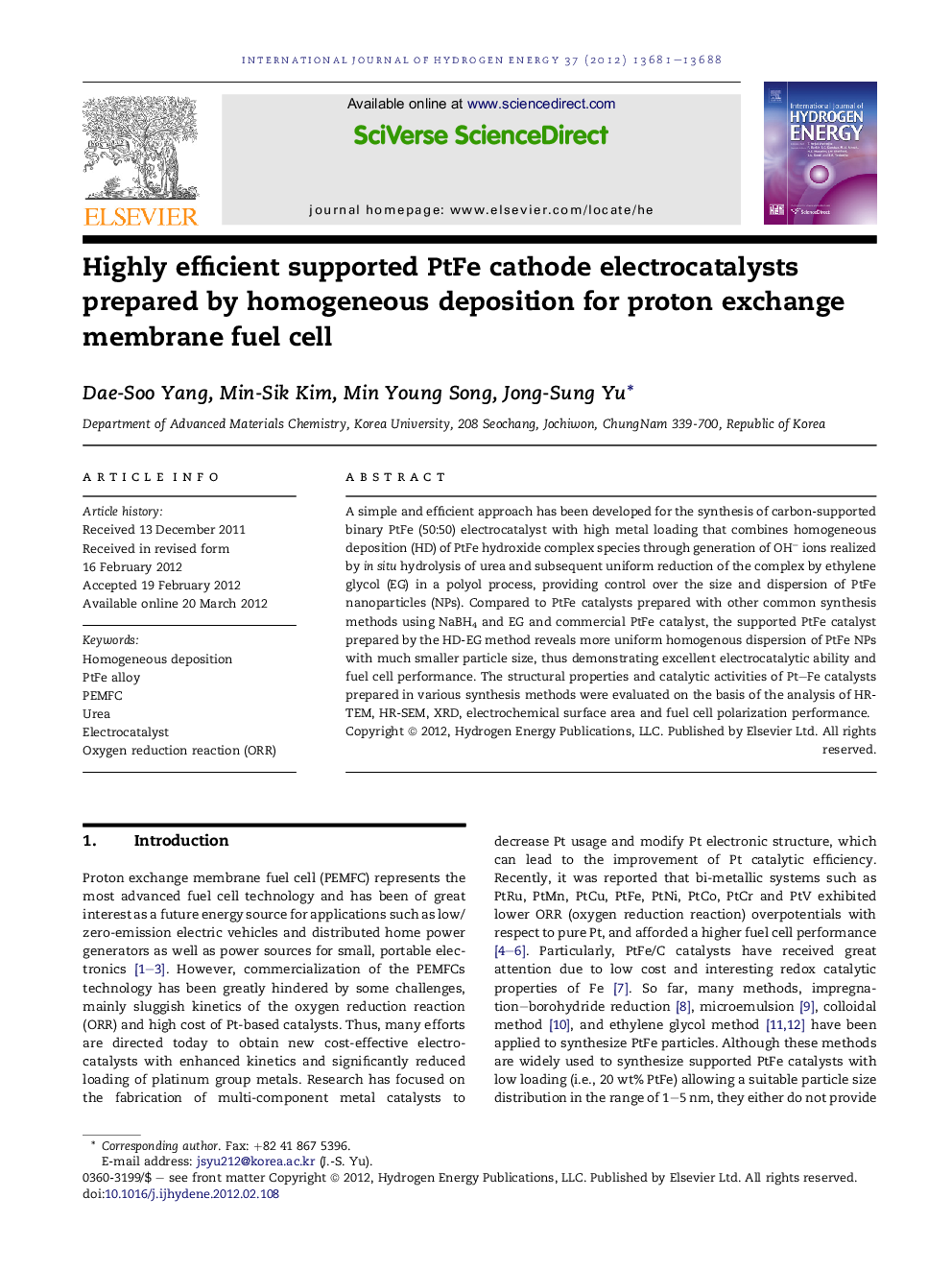| Article ID | Journal | Published Year | Pages | File Type |
|---|---|---|---|---|
| 1282270 | International Journal of Hydrogen Energy | 2012 | 8 Pages |
A simple and efficient approach has been developed for the synthesis of carbon-supported binary PtFe (50:50) electrocatalyst with high metal loading that combines homogeneous deposition (HD) of PtFe hydroxide complex species through generation of OH− ions realized by in situ hydrolysis of urea and subsequent uniform reduction of the complex by ethylene glycol (EG) in a polyol process, providing control over the size and dispersion of PtFe nanoparticles (NPs). Compared to PtFe catalysts prepared with other common synthesis methods using NaBH4 and EG and commercial PtFe catalyst, the supported PtFe catalyst prepared by the HD-EG method reveals more uniform homogenous dispersion of PtFe NPs with much smaller particle size, thus demonstrating excellent electrocatalytic ability and fuel cell performance. The structural properties and catalytic activities of Pt–Fe catalysts prepared in various synthesis methods were evaluated on the basis of the analysis of HR-TEM, HR-SEM, XRD, electrochemical surface area and fuel cell polarization performance.
► A simple and efficient HD-EG approach has been developed for synthesis of carbon-supported PtFe. ► The urea-assisted HD-EG method demonstrates excellent control over the size and dispersion of PtFe NPs. ► The method is very effective particularly for high metal loading, demonstrating excellent electrocatalytic ability. ► The combined HD-EG method is very simple, cost-effective and environmentally benign process.
